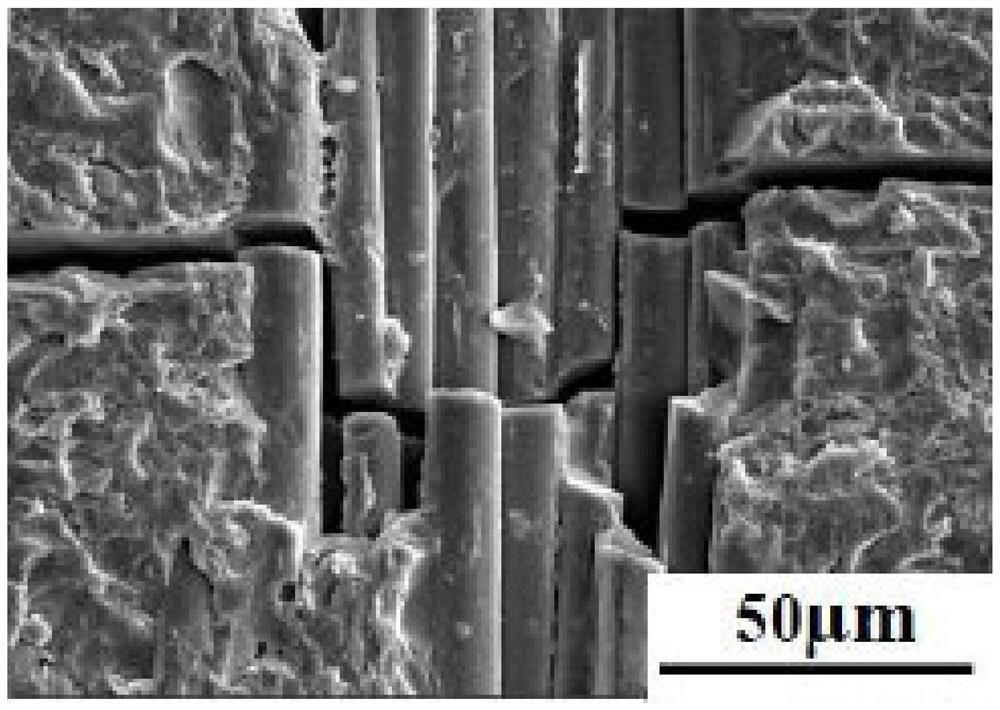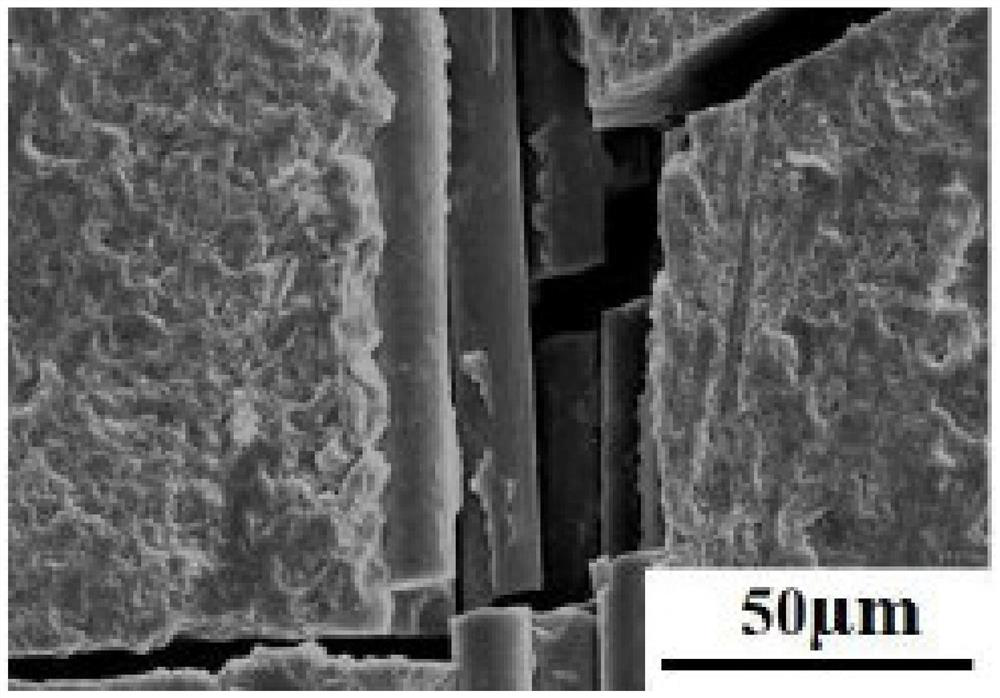A preparation method of nano-silica/nitrogen-doped modified fiber composite material
A nano-silica and modified fiber technology, applied in the field of materials, can solve the problems of difficult technological breakthroughs, high prices, high production costs, etc., to ensure the effect of strengthening and toughening, improve the distribution of lattice defects, and improve efficiency. Effect
- Summary
- Abstract
- Description
- Claims
- Application Information
AI Technical Summary
Problems solved by technology
Method used
Image
Examples
Embodiment 1
[0032] Step 1: Immerse the aluminum silicate fiber cloth in a polyvinylidene fluoride mixed solution with a temperature of 60 ° C for hot filling treatment for 1 hour, and then add the cinnamamide mixed solution dropwise to adjust the pH of the solution to 8, and obtain a liquid-solid mass ratio of 3:1 mixed precursor A;
[0033] Among them, the aluminum silicate fiber cloth is a combined needle-punched felt body, which is composed of 40% chopped strand mat, 20% roving and 40% chopped yarn according to the mass ratio, and the composition contains 50% according to the mass ratio. Aluminum silicate, 20% zirconia, 20% titanium oxide and 10% beryllium oxide;
[0034]The polyvinylidene fluoride mixed solution is composed of 55% ethylene glycol monomethyl ether, 15% polyvinylidene fluoride and 30% deionized water in a volume ratio;
[0035] The cinnamamide mixed solution is composed of 40% cinnamamide, 20% potassium hydroxide and 40% deionized water in a mass ratio;
[0036] Step ...
Embodiment 2
[0044] Step 1: Soak the aluminum silicate fiber cloth in a polyvinylidene fluoride mixed solution with a temperature of 70 ° C for hot filling treatment for 1.5 hours, and then add the cinnamamide mixed solution dropwise to adjust the pH of the solution to 8.5 to obtain the liquid-solid mass ratio 5:1 mixed precursor A;
[0045] Among them, aluminum silicate fiber cloth is a combined needle-punched felt body, which is composed of 60% chopped strand mat, 20% roving and 20% chopped strands according to the mass ratio, and the composition contains 30% according to the mass ratio. Aluminum silicate, 30% zirconia, 25% titanium oxide and 15% beryllium oxide;
[0046] The polyvinylidene fluoride mixed solution is composed of 50% ethylene glycol monomethyl ether, 20% polyvinylidene fluoride and 30% deionized water in a volume ratio;
[0047] The cinnamamide mixed solution is composed of 60% cinnamamide, 20% potassium hydroxide and 20% deionized water by mass ratio;
[0048] Step 2: ...
Embodiment 3
[0056] Step 1: Immerse the aluminum silicate fiber cloth in a polyvinylidene fluoride mixed solution with a temperature of 80 ° C for hot filling treatment for 2 hours, and then add the cinnamamide mixed solution dropwise to adjust the pH of the solution to 9 to obtain a liquid-solid mass ratio of 7:1 mixed precursor A;
[0057] Among them, the aluminum silicate fiber cloth is a combined needle-punched felt body, which is composed of 40% chopped strand mat, 40% roving and 20% chopped yarn according to the mass ratio, and the composition contains 30% according to the mass ratio. Aluminum silicate, 40% zirconia, 20% titanium oxide and 10% beryllium oxide;
[0058] The polyvinylidene fluoride mixed solution is composed of 60% ethylene glycol monomethyl ether, 10% polyvinylidene fluoride and 30% deionized water in a volume ratio;
[0059] The cinnamamide mixed solution is composed of 50% cinnamamide, 25% potassium hydroxide and 25% deionized water in a mass ratio;
[0060] Step ...
PUM
 Login to View More
Login to View More Abstract
Description
Claims
Application Information
 Login to View More
Login to View More - R&D
- Intellectual Property
- Life Sciences
- Materials
- Tech Scout
- Unparalleled Data Quality
- Higher Quality Content
- 60% Fewer Hallucinations
Browse by: Latest US Patents, China's latest patents, Technical Efficacy Thesaurus, Application Domain, Technology Topic, Popular Technical Reports.
© 2025 PatSnap. All rights reserved.Legal|Privacy policy|Modern Slavery Act Transparency Statement|Sitemap|About US| Contact US: help@patsnap.com



